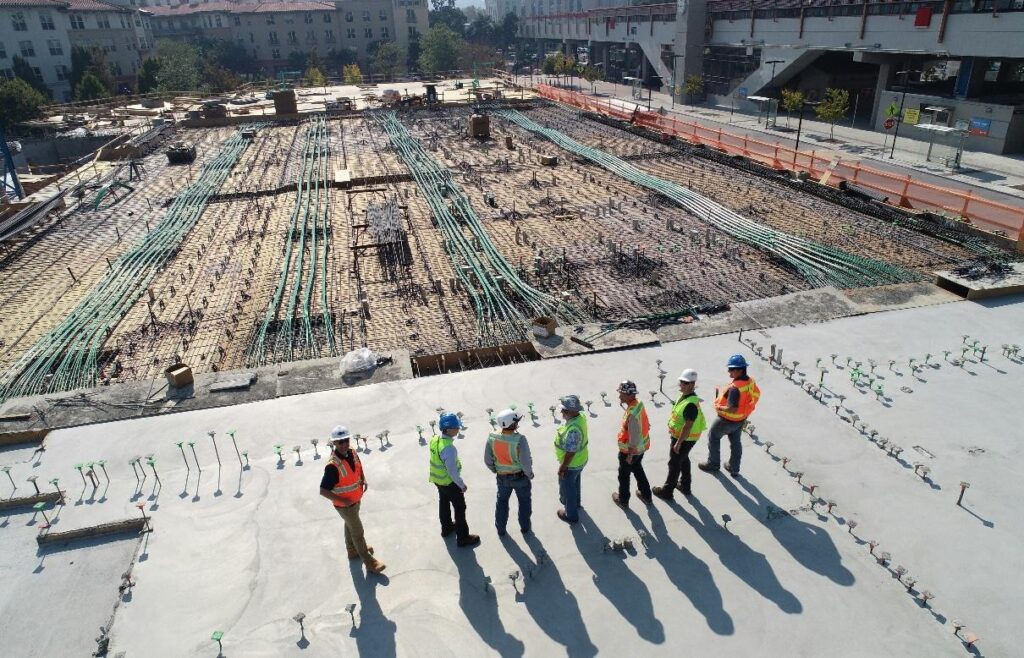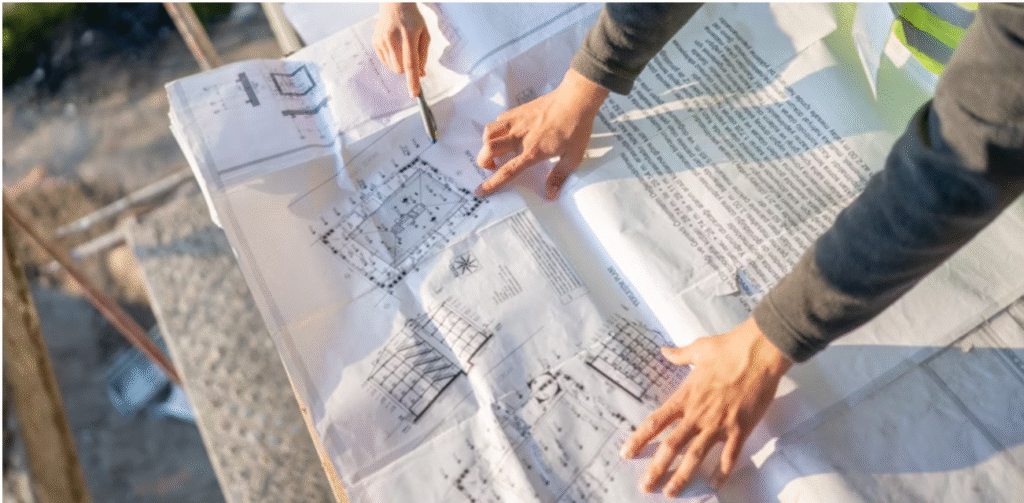Have you ever been overwhelmed by the estimated numbers? And wondered if you are missing something important? Many clients face this challenge, whether projects are residential or commercial. The estimate is not just a price tag. But a comprehensive analysis. It’s just like a roadmap. It helps you avoid surprises, like unexpected costs or delays. In this guide, we will break down the process step by step, enabling you to make informed decisions and keep your project on track.
Understanding Line Items in an Estimate
Line items are the essentials of any construction estimate. They list specific costs for materials, labor, and tasks, making the total in clear parts. Each one contributes to the final product. For example, for a typical roofing project, line items include shingles, underlayment, flashing, and labor for installation. A detailed estimate will specify the exact quantities, such as 500 square feet of asphalt shingles at $2 per square foot, rather than a vague lump sum. This transparency helps you see where your budget goes and what extras are.
Common categories include direct costs for raw materials and subcontractor fees, as well as indirect costs for permits or equipment rentals. When reviewing, ask yourself if each item aligns with your project scope. If something seems off, questioning it earlier will help you gain insight. Accurate line items prevent conflicts later and ensure you’re paying for value, not fluff. To make it easier, scan for units of measurement (square feet), linear feet, or hours worked. Remember, a good estimate uses clear descriptions and avoids using jargon that confuses non-experts.

Included Costs and Potential Risks Identification
Not all estimates are the same. Some budget everything, while others leave gaps that lead to extra bills. Key included costs cover labor, materials, overhead, and profits. Overheads are insurance, tools, and administrative fees. It typically adds 10-20% to the total. Potential risks arise when things become complicated. Construction projects face unexpected weather delays, material price changes or site issues.
A solid estimate accounts for these by noting assumptions like stable lumber prices or including allowances for variables. For instance, if you’re planning a foundation. Pour risks could involve discovering underground utilities, not shown on plans. Estimates might flag this with a note saying “excludes rock removal if encountered.” Spotting these helps you prepare mentally and financially. Common risks also include scope creep, where small changes can increase costs. By identifying these risks, you can make strategies with your contractor to reduce budget overruns.
What to Do When an Estimate Exceeds Your Budget
It’s common, the estimate is higher than expected. This leaves you scrambled. First, spare your time to review the details. Break it down by category to see what’s driving the cost. Maybe labor in your area is pricier due to demand.
One effective step is value engineering. This means finding cost-saving alternatives without sacrificing quality. This means switching to a durable yet cheaper material for flooring. Affordable roofing estimates for contractors mean considering options like architectural shingles over premium metal.
Negotiate it carefully. Ask the contractor to explain high-priced items and suggest phased work starting with essentials. If possible, get different bids to leverage competition. But avoid depending only on price. Low bids might cut corners. If adjustments are not enough. Get financing or grants, especially for energy-efficient upgrades. Redirect the budget from custom features to essential structural work.

Incorporating Contingency Planning and Flexibility
No project runs perfectly. So, contingency planning acts as your safety net. A contingency fund is the money set aside for the surprises. It can be up to 5-15% of the total estimate, depending on the project’s complexity. A $100,000 remodel means $5000 to $15000 extra. Flexibility comes from building options into an estimation by using alternate materials if prices spike. For example, if steel costs rise due to market changes, having a backup like aluminum saves time and money.
Effective planning involves risk assessment early on. Identify high-risk tasks such as weather-dependent tasks. Therefore, allocate more contingency there. Track spending as work progresses. Adjust the fund as needed. This proactive stance turns potential crises into minor tweaks, keeping stress low. In practice, a client building an addition might set a contingency for soil testing results. The funds cover the use of extra labor without slowing the progress in case of issues. Always discuss how contingencies are managed. Who decides when to use them and how leftovers are handled?
Using the Estimate for Effective Project Planning and Decision Making
An estimate is more than numbers. It’s a tool for informed choices. Use it to create a timeline that tracks costs in phases like demolition, framing, and finishing. This helps secure financing, and detailed breakdowns show feasibility.
Before making a decision, compare the estimate against your goals. If energy efficiency is key, then check if it includes insulation upgrades that offer long-term benefits. It also guides subcontractor selection, ensuring bids align with your vision. In project planning, the estimate highlights cash flow needs. You must plan payments to avoid funding gaps.
Monitor actual costs against estimates. Prepare monthly adjusting plans if variances appear. This vigilance catches issues early that may be rising fuel costs affecting transportation. Ultimately, a well-used estimate empowers you to implement changes wisely. For instance, if a design tweak adds $5000, weigh it against the benefits using the original figures as a benchmark. This method has proven successful, with projects completed on time and within budget.

How ALM Estimating Ensures Clarity in Estimates for Clients
A confusing estimate leaves you guessing and stressed. ALM Estimating fixes this by designing every document to be read, understood, and used by anyone. Even if construction is new to you. Here’s exactly how we make it happen.
Plain Language Descriptions
Every line item uses short everyday words. If a term like “flashing” appears, we add “metal strips that stop water leaks” in the same line.
Visual Breakdowns
A full-colour pie chart on a page breaks down the total into labour, materials, and overhead. You see at a glance where most money goes.
Show Unit Pricing
ALM Estimating lists cost per square foot per hour or per item right beside the quantity. You can multiply the numbers yourself and verify the total.
Assumptions Listed Upfront
A boxed section at the top states what is assumed, such as stable material prices or clear site access. Nothing is hidden in fine print.
Risk Flags in Red
Any cost that might rise like rock removal or permit delays, is highlighted in bold red. A one-sentence note explains the possible extra charge.
Side by Side alternates
For big items, two or three cheaper options are shown in a simple table. You can compare quality and savings instantly.
Glossary Page
The last page defines every term used in the estimate. Flip it there, and the whole document makes sense on its own.
Live Review Call
Within 24 hours, we hop on a 15-minute call. We walk through every section and answer questions until you’re 100% clear.
Clear estimates remove fear and speed decisions. You deserve numbers you can trust and act. For a free, crystal-clear estimate, partner with pros like ALM Estimating and start your project with great confidence.

Conclusion:
A crystal clear estimate turns confusion into control and worry into wins. With every cost explained, flagged risks and options laid out. So, you step into your project knowing exactly what to expect and how to steer it. Don’t leave your budget to chance. Secure the clarity you need right now. Reach out to the experts like ALM Estimating for a free, no-surprises estimate and build your next success story with confidence.
Don’t guess, know your numbers. Get a clear, accurate construction estimate that makes decision-making easy. Request your free detailed estimate from ALM Estimating. Get your free quote now.
FAQs:
Q1. What is the difference between an estimate and a quote in construction?
An estimate is a best-guessed cost based on early plans and market prices. It can shift as details change. A quote is a firm price the contractor must honour once you sign. Use estimates for planning and quotes for final contracts.
Q2. How accurate should a construction estimate be?
Early rough estimates often swing 20 to 30% because drawings are incomplete. Once plans are final and bids are in, detailed estimates should stay within 5 to 10%. The closer you get to starting, the tighter the numbers become.
Q3. Why do estimates include overhead costs?
Overhead pays for the contractor’s office rent, truck insurance, and staff salaries. Without it they would lose money on every job. These costs usually run 10 to 20% of the total and keep the business running year-round.
Q4. Can I negotiate after receiving an estimate?
Yes, you can. Ask about bundling tasks or scheduling work in the slow season for discounts. Suggest value swaps like using a different tile that costs less but looks great. Good contractors welcome smart talks that keep quality high.
Q5. What if hidden costs appear during the project?
Solid estimates list assumptions like “no rock in the soil.” When surprises hit, you create a change order. This short form spells out the extra work and price so both sides agree before anyone swings a hammer.
Q6. How do I compare estimates from different contractors?
Line up the scopes side by side. Check that every bid covers the same square footage, same materials, and same timeline. Watch for one contractor sneaking in allowances while another gives firm prices.
Q7. What’s a reasonable contingency percentage?
Simple remodels need 5 to 10 % set aside for surprises. New builds or older homes with unknown conditions often carry 15% or more. The riskier the site, the bigger the cushion you want in the bank.
Q8. How often should I review a construction estimate?
Sit down with the numbers every month and compare invoices to the original line items. Spot a 10% overrun early, and you can trim the next phase instead of scrambling at the end. Monthly check-ups are important to keep the budget alive.
Q9. Are digital tools helpful for understanding estimates?
Absolutely. Free apps turn spreadsheets into color charts so you see labor versus materials in seconds. Some programs even flag rising steel prices in real time. A quick graph beats staring at rows of numbers every time.
Q10. What is the role of location in estimates?
Labor in big cities is costlier than in small towns. Shipping heavy stone to a mountain job adds freight fees. Local codes might demand thicker insulation or pricier permits. Always ask for regional pricing so the estimate fits your zip code.
